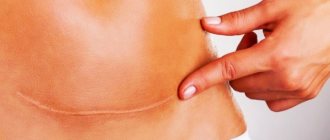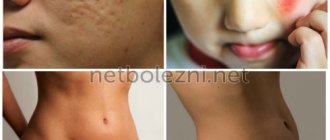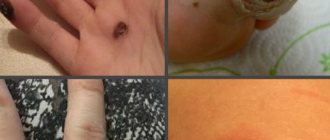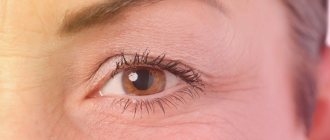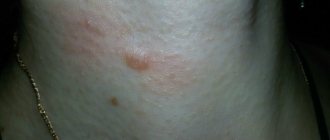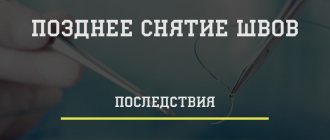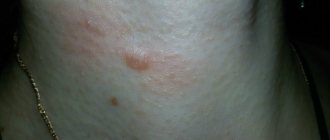Types of suture materials and suturing methods in modern medicine
An ideal suture material should have the following characteristics:
Be smooth and glide without causing additional damage. Be elastic, stretchable, without causing compression and tissue necrosis. Be durable and withstand loads. Tie securely in knots. Be biocompatible with body tissues, inert (do not cause tissue irritation), and have low allergenicity. The material should not swell from moisture. The period of destruction (biodegradation) of absorbable materials must coincide with the time of wound healing.
Different suture materials have different qualities. Some of them are advantages, others are disadvantages of the material. For example, smooth threads will be difficult to tighten into a strong knot, and the use of natural materials, so valued in other areas, is often associated with an increased risk of developing infection or allergies. Therefore, the search for the ideal material continues, and so far there are at least 30 thread options, the choice of which depends on specific needs.
Suture materials are divided into synthetic and natural, absorbable and non-absorbable. In addition, materials are manufactured consisting of one thread or several: monofilament or multifilament, twisted, braided, having various coatings.
Non-absorbable materials:
Natural – silk, cotton. Silk is a relatively durable material, thanks to its plasticity it ensures the reliability of knots. Silk is a conditionally non-absorbable material: over time, its strength decreases, and after about a year the material is absorbed. In addition, silk threads cause a pronounced immune response and can serve as a reservoir of infection in the wound. Cotton has low strength and is also capable of causing intense inflammatory reactions. Stainless steel threads are durable and produce minimal inflammatory reactions. Used in abdominal surgeries, when suturing the sternum and tendons. Synthetic non-absorbable materials have the best characteristics. They are more durable and their use causes minimal inflammation. Such threads are used for matching soft tissues, in cardiac and neurosurgery, and ophthalmology.
Absorbable materials:
Natural catgut. The disadvantages of the material include a pronounced tissue reaction, the risk of infection, insufficient strength, inconvenience in use, and the inability to predict the timing of resorption. Therefore, the material is currently practically not used. Synthetic absorbable materials. Made from degradable biopolymers. They are divided into mono and polyfilament. Much more reliable compared to catgut. They have certain resorption times, which differ for different materials, are quite durable, do not cause significant tissue reactions, and do not slip in the hands. Not used in neuro and cardiac surgery, ophthalmology, in situations where constant strength of sutures is required (for suturing tendons, coronary vessels).
Suture methods:
Ligature sutures - they are used to ligate vessels to ensure hemostasis. Primary sutures - allow you to compare the edges of the wound for healing by primary intention. Sutures can be continuous or interrupted. According to indications, immersed, purse-string and subcutaneous sutures can be applied. Secondary sutures - this method is used to strengthen primary sutures, to re-close a wound with a large number of granulations, in order to strengthen a wound that heals by secondary intention. Such sutures are called retention sutures and are used to unload the wound and reduce tissue tension. If the primary suture was applied in a continuous manner, interrupted sutures are used for the secondary suture, and vice versa.
Features of caring for internal sutures (in the vagina and cervix)
Sutures on the internal genital organs made with absorbable threads (such suture material is called catgut, in modern institutions, vicryl or safil) do not require complex manipulations. They do not need to be removed or washed with any solutions; it is enough for the young mother to ensure complete rest and strictly adhere to the rules of personal intimate hygiene so that the infection does not enter the organs of the reproductive system, since discharge in the postpartum period (especially the first twenty days) is a favorable environment for reproduction pathogenic microbes.
Perform any intimate procedures after washing your hands first - this applies to washing your genitals, visiting the toilet, changing sanitary pads, etc. After each visit to the toilet, remove the used pad and wash yourself, so that the direction of movement goes from the vulva to the rectum with warm water and soap.
Remember - the intestinal microflora should under no circumstances get on the genitals, which is why it is so important to follow this sequence of actions. After treating the perineum with water, gently pat it dry with a clean or disposable towel, collecting all the moisture. If you use linen products, change them at least once a day, and more often as they become dirty. Empty your bladder every three to four hours, even if you don't feel the urge to urinate. You will have to avoid taking a bath in the first month after giving birth.
How long do stitches take to heal?
Every surgeon strives to achieve wound healing by primary intention. In this case, tissue restoration takes place in the shortest possible time, swelling is minimal, there is no suppuration, and the amount of discharge from the wound is insignificant. Scarring with this type of healing is minimal. The process goes through 3 phases:
Inflammatory reaction (first 5 days), when leukocytes and macrophages migrate to the wound area, destroying microbes, foreign particles, and destroyed cells. During this period, the connection of the tissues has not reached sufficient strength, and they are held together by seams. The phase of migration and proliferation (up to the 14th day), when fibroblasts produce collagen and fibrin in the wound. Thanks to this, granulation tissue is formed from the 5th day, and the strength of fixation of the wound edges increases. Phase of maturation and restructuring (from the 14th day until complete healing). During this phase, collagen synthesis and connective tissue formation continues. Gradually, a scar forms at the site of the wound.
How long does it take for stitches to be removed?
When the wound has healed to the point that it no longer requires the support of non-absorbable sutures, they are removed. The procedure is carried out under sterile conditions. At the first stage, the wound is treated with an antiseptic, and hydrogen peroxide is used to remove crusts. Grasping the thread with surgical tweezers, cross it at the point where it enters the skin. Gently pull the thread from the opposite side.
Suture removal time depending on their location:
Sutures on the skin of the torso and limbs should be left in place for 7 to 10 days. Stitches on the face and neck are removed after 2–5 days. Retention sutures are left in place for 2–6 weeks.
Factors influencing the healing process
The speed of healing of sutures depends on many factors, which can be divided into several groups:
Features and nature of the wound. Definitely, wound healing after minor surgery will be faster than after laparotomy. The process of tissue restoration is lengthened in the case of suturing a wound after an injury, when there has been contamination, penetration of foreign bodies, and crushing of tissue. Location of the wound. Healing occurs best in areas with good blood supply, with a thin layer of subcutaneous fat. Factors determined by the nature and quality of surgical care provided. In this case, the features of the incision, the quality of intraoperative hemostasis (stopping bleeding), the type of suture materials used, the choice of suturing method, compliance with aseptic rules, and much more are important. Factors related to the patient’s age, weight, and health status. Tissue repair is faster at a young age and in people with normal body weight. Chronic diseases, in particular diabetes mellitus and other endocrine disorders, oncopathology, and vascular diseases, prolong the healing process and can provoke the development of complications. At risk are patients with foci of chronic infection, with reduced immunity, smokers, and HIV-infected people. Reasons related to caring for the postoperative wound and sutures, adherence to diet and drinking regimen, physical activity of the patient in the postoperative period, compliance with the surgeon’s recommendations, and taking medications.
Why does postoperative pain occur?
Postoperative pain according to ICD-10 (International Classification of Diseases) refers to unspecified types of pain and does not carry any signaling information for either the patient or the doctor, since the causes and mechanisms of its occurrence are clear. Therefore, modern principles of patient management after surgery provide for maximum relief from unpleasant pain. Moreover, pain has a negative impact not only on healing, but also on vital processes in the body: the functioning of the cardiovascular, respiratory, digestive, central nervous systems, as well as blood clotting4.
The formation of painful sensations is ensured by a multi-level reaction that connects the immediate area of damage (wound surface) and the central nervous system. It begins with mechanical stimuli in the area of the incision and the release of biologically active substances (prostaglandins, bradykinins and others)4, and ends with information processing in the cerebral cortex and the connection of emotional and psychological components.
Pain syndrome develops as a result of the emergence of areas of increased pain sensitivity (hyperalgesia). Primary hyperalgesia is associated directly with damage and forms near the wound. The area of secondary hyperalgesia covers a larger area and occurs later, over the next 12-18 hours4, as it is associated with stimulation of other types of receptors. It is she who is responsible for the preservation and intensification of pain on the second or third day after surgery, and subsequently for the development of chronic pain syndrome7.
Up to contents
How to properly care for seams
If the patient is in the hospital, a doctor or nurse will care for the sutures. At home, the patient should follow the doctor's recommendations for wound care. It is necessary to keep the wound clean, treat it daily with an antiseptic: a solution of iodine, potassium permanganate, brilliant green. If a bandage is applied, consult your doctor before removing it. Special medications can speed up healing. One of these products is contractubex gel, containing onion extract, allantoin, and heparin. It can be applied after epithelization of the wound.
Healing of sutures after childbirth
For the speedy healing of postpartum sutures, strict adherence to hygiene rules is required:
All comments
Elena 11/27/2017 at 11:47 am # Reply
Thank you very much for the article! I especially liked the part about the factors that affect the speed of healing of sutures
Lifestyle with sutures on the cervix, vagina and perineum
Cervical ruptures during labor and subsequent suturing of the ruptures do not impose additional restrictions on a woman’s activity, unlike perineal injuries.
If there are tears and seams in the perineal area, the young mother is instructed to strictly follow the following recommendations:
- During the first three weeks after childbirth, sitting positions should be avoided; this period is necessary for the complete fusion of the muscles of the perineum and pelvic floor. It is necessary to perform all usual activities (eating, performing hygiene procedures, personal care), as well as taking care of the newborn while standing or lying down. This also applies to traveling in a car - the back seat must be cleared so that a woman can sit there comfortably and safely. There are special positions to avoid stress on the perineum, “half-sided”, “leg to leg”, the doctor should explain this in detail. An excellent option for active mothers is an orthopedic circle; you can even sit on it while driving.
— Visit the toilet to have timely bowel movements and avoid constipation. The patient is allowed to sit on the toilet on the first day after birth. To facilitate the process of defecation, mother can use suppositories (rectal suppositories) with glycerin and other herbal remedies. These effective and at the same time safe drugs help intestinal function and smooth bowel movements. If necessary, the doctor may prescribe other medications, but it must be remembered that when breastfeeding, the baby also receives these substances.
- Do not lift heavy objects. It is highly not recommended to deal with objects and things weighing more than three kilograms, so if the child is large (4 kg or more), you should ask for help from family and friends until the mother’s condition is completely normalized.
